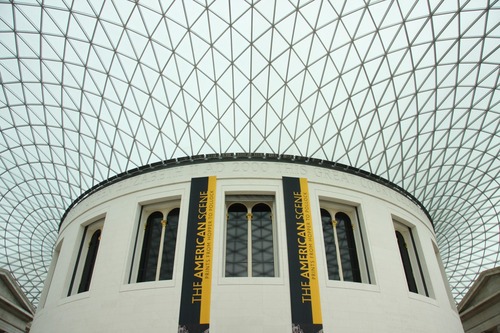I’ve been thinking about blogging on the topic of what value architects bring to the table in an age of open source software, commoditized hardware and agile development for a while. I’ve finally been spurred into action by re-discovering the famous Monty Python sketch What have the Romans ever done for us? (I often find that thinking of a name for a blog post helps me to formulate the content and structure what I want to say). Here’s the video in case you haven’t seen it.
So, picture the scene…
You are in a meeting with the chief information office (CIO) of a public or private sector enterprise who has been tasked with aligning IT with the new business strategy to “deliver real business value”. The current hot technologies, namely social media, mobile, big data/analytics and cloud, are all being mooted as the thing the organisation needs to enable it to leapfrog the competition and deliver something new and innovative to its customers. The CIO however has been burnt before by an architecture team that seems to spend most of its time discussing new technology, drawing fine looking pictures that adorn their cubicle walls and attending conferences sponsored by vendors. She struggles to see the value these people bring and asks in a frustrated tone “what have architects ever done for us”? What’s your response? Here’s what I think architects should be doing to support the CIO and help her achieve the enterprise’s goals.
- Architects bring order from chaos. The world of IT continues to get ever more challenging. Each new architectural paradigm adds more layers of complexity onto an organisations already overstretched IT infrastructure. As more technologies get thrown into this mix, often to solve immediate and pressing business problems but without being a part of any overall strategic vision, IT systems begin to sink into more and more of a chaotic state. One of the roles of an architect is not only to attempt to prevent this happening in the first place (see number 2) but also to describe a future “to-be” state, together with a road map for how to get to this new world. Some will say that this form of enterprise level architecting is fundamentally flawed however I would argue it still has great value provided it is done at the right level of abstraction (not everything is enterprise level) and recognises change will be continuous and true nirvana will never be achieved.
- Architects don’t jump on the latest trend and forget what went before. When a new technology comes along it’s sometimes easy to forget that it’s just a new technology. Whilst the impact on end users may be different, the way enterprises go about integrating that technology into their business, still needs to follow tried and tested methods. Remember, don’t throw out the baby with the bath water.
- Architects focus on business value rather than latest technology. Technologies come and go, some change the world, some don’t. Unless technology can provide some tangible benefits to the way a business operates it is unlikely to gain a foothold. Architects know that identifying the business value of technology and realising that value through robust solutions built on the technology is what is key. Technology for the sake of technology no longer works (and probably never did).
- Architects know how to apply technology to bring innovation.This is subtlety different from 3. This is about not just using technology to provide incremental improvements in the way a business operates but in using technology to provide disruptive innovation that causes a major shift in the way a business operates. Such disruptions often cause some businesses to disappear but at the same time can cause others to be created.
- Architects know the importance of “shipping”. According to Steve Jobs “real artists ship”. Delivering something (anything) on time and within budget is one of the great challenges of software development. Time or money (or both) usually run out before anything is delivered.Good architects know the importance of working within the constraints of time and money and work with project managers to ensure shipping takes place on time and within budget.
So there you have it, my take on the value of architects and what you hopefully do for your organisation or clients. Now, if only we could do something about bringing world peace…


